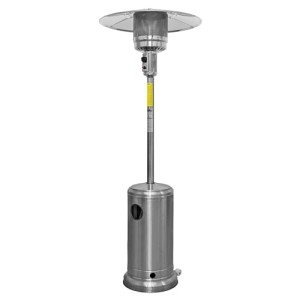Garden Heating Solutions: Enhancing Outdoor Spaces Year-Round
As seasonal changes bring varying temperature levels, garden lovers face the obstacle of keeping their valued outdoor areas. Whether for cultivating plants, amusing guests, or just enjoying the fresh air, garden heating solutions are essential to making the most of satisfaction and performance. This post explores various options offered for heating gardens, consisting of traditional and modern solutions, their advantages, and practical suggestions for execution.
Understanding the Need for Garden Heating
A well-kept garden needs to be a year-round sanctuary, providing respite in both summer and winter season. The need for garden heating occurs from:
- Frost Protection: Certain plants, specifically tender ranges, need defense from frost to endure cooler months.
- Extended Growing Seasons: Heating solutions can enable earlier planting in spring and later collecting in fall.
- Comfort Optimization: Outdoor events and activities can occur more conveniently with regulated temperatures.
Kinds Of Garden Heating Solutions
Garden heating solutions can be divided into several classifications based on their innovation and fuel source. Here's an in-depth look at some popular options:
1. Electric Heaters
Electric heaters are a versatile choice for smaller sized gardens and outdoor patios. They are simple to install and operate, providing instantaneous warmth with very little effort.
- Types of Electric Heaters:
- Patio Heaters: Freestanding units with a heating element that radiates heat.
- Wall-mounted Heaters: Ideal for little areas; these heaters conserve ground space while offering warmth.
- Portable Electric Fans: Great for targeted heating in particular locations.
2. Gas Heaters
Gas patio heaters are a conventional option for outdoor heating and are extensively appreciated for their effectiveness and visual beauty.
- Kinds Of Gas Heaters:
- Propane Heaters: Easy to transport and establish, appropriate for most outdoor settings.
- Natural Gas Heaters: Permanent components, ideal for areas with existing gas lines.
3. Wood-burning Solutions
For a rustic touch, wood-burning solutions such as fire pits and chimineas add heat and ambiance to gardens.
- Advantages and disadvantages of Wood-burning Heating:
- Advantages: Aesthetic appeal, social environment, and reliable heat circulation.
- Disadvantages: Requires more upkeep, management of ashes, and prospective fire risks.
4. Infrared Heaters
Infrared heaters utilize infrared radiation to directly warm items, making them energy-efficient and best for outdoor areas.
- Advantages: Immediate heat, minimal energy loss, and suitability for all weather conditions.
5. Outdoor Heating Mats and Blankets
For smaller sized patio areas or specific zones in a garden, heating mats and blankets can be an innovative solution to provide an extra layer of warmth.
Considerations for Choosing a Heating Solution
When selecting the best heating solution for a garden, numerous factors need to be evaluated:
- Garden Size: Larger areas might need numerous heating sources for effective heat.
- Spending plan: Various options exist at different cost points. a knockout post -effectiveness can determine the selected approach.
- Safety: Evaluate the security features of the heating options, specifically when using gas or wood-burning solutions.
- Visual Appeal: Integration with garden design can enhance total visual enjoyment.
Table 1: Comparison of Garden Heating Solutions
| Type | Setup | Fuel Source | Efficiency | Cost |
|---|---|---|---|---|
| Electric Heater | Easy | Electrical energy | Rapid/Immediate | Moderate |
| Gas Heater | Moderate | Propane/Natural | High/Effective | Moderate to High |
| Wood-burning Option | Moderate/Hard | Wood | Reliable | Low to Moderate |
| Infrared Heater | Easy | Electricity | Immediate | Moderate to High |
| Heating Mats/Blankets | Easy | Electrical power | Targeted | Low to Moderate |
Implementing Garden Heating Solutions
To ensure efficient heating in outdoor settings, a strategic method is needed. Here are some useful ideas:
- Evaluate the Layout: Consider the garden layout to recognize locations where heating is most needed.
- Choose Multidirectional Heaters: This will assist distribute heat more uniformly across the space.
- Improve Insulation: Utilize windbreaks (like garden walls) or heat-retaining materials around the heating setup.
- Incorporate Decor: Attractive styles of heating systems can boost the garden's ambiance while offering warmth.
- Regular Maintenance: Ensure that heaters (specifically gas and wood-burning) are maintained for optimum efficiency and security.
FAQs About Garden Heating Solutions
1. How safe are electrical heaters for outdoor usage?
Electric heaters developed for outdoor usage are normally safe when installed correctly. Always follow maker standards and security guidelines to alleviate threats.
2. Can I leave my gas heater outside throughout winter season?
While many gas heaters are constructed for endurance outdoors, it's advisable to cover them or save them inside to protect them from severe weather.
3. Are there energy-efficient options for heating my garden?
Yes! a knockout post and heating mats are especially energy-efficient as they focus heating in specific areas rather than warming the surrounding air.
4. What are the very best plants to grow in a heated garden?
Popular options consist of tomatoes, herbs, peppers, and other tender plants that grow in temperature levels above 50 ° F (10 ° C).
Garden heating solutions tremendously enhance outdoor spaces, enabling for year-round enjoyment and enhanced plant growth. By comprehending the various types of heating options offered and making notified options based upon individual choices and specific garden conditions, garden enthusiasts can change their outdoor locations into cozy retreats, despite the season.

